Examples of Medicinal Herbs for Four Types of Damp-Heat Syndromes: Liver-Gallbladder, Large Intestine, Bladder, and Uterus
Original Pharmacist Xiao Hua Hua Cat 2020-06-16 07:38:00

Damp-heat can cause sensations of heat, headaches, heaviness throughout the body, and bloating in the abdomen and stomach.
Damp-heat is a term frequently mentioned in Traditional Chinese Medicine (TCM). Many people often say they have excessive dampness and are afflicted by damp-heat. Damp-heat can lead to various uncomfortable symptoms, such as feeling hot all over, yet others do not perceive an elevated temperature when touching the skin, and a thermometer shows normal readings; headaches accompanied by a heavy feeling in the head and body; a bitter taste in the mouth; discomfort in the abdomen; and a sensation of bloating in the stomach. Given that damp-heat can cause so many symptoms and discomforts, what exactly is damp-heat? Perhaps many have not studied it in detail.
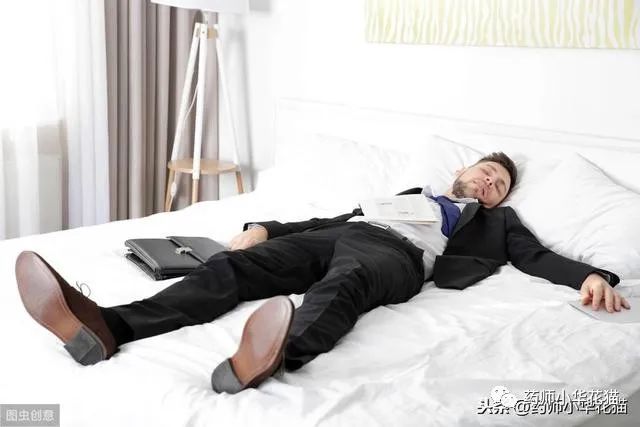
Imbalance of Qi, Blood, Yin, and Yang—leading to heaviness, fatigue, and lack of energy.
Concept of Damp-Heat:
In TCM theory, “Dampness and “Heat” are two pathogenic factors that can cause disease in the human body. Dampness and heat can be categorized as external or internal, with external dampness, external heat, internal dampness, and internal heat. Today, we refer to damp-heat, which primarily refers to internal dampness and internal heat. These are pathological products resulting from dysfunction of the internal organs, leading to imbalances in Qi, Blood, Yin, and Yang. Dysfunction of the internal organs mainly refers to the spleen’s impaired transport function, the lung’s dysfunction in regulating water pathways, and the kidney’s impaired excretory function. These dysfunctions can directly lead to problems in the metabolism of body fluids, where excess fluids cannot be expelled in a timely manner, resulting in the accumulation of dampness within the body. Imbalances in Qi, Blood, Yin, and Yang can lead to internal heat, often affecting the liver and kidneys, such as Yin deficiency and blood deficiency leading to the generation of internal heat, or Yang excess causing the production of internal heat. The combination of these factors can lead to the emergence of damp-heat.
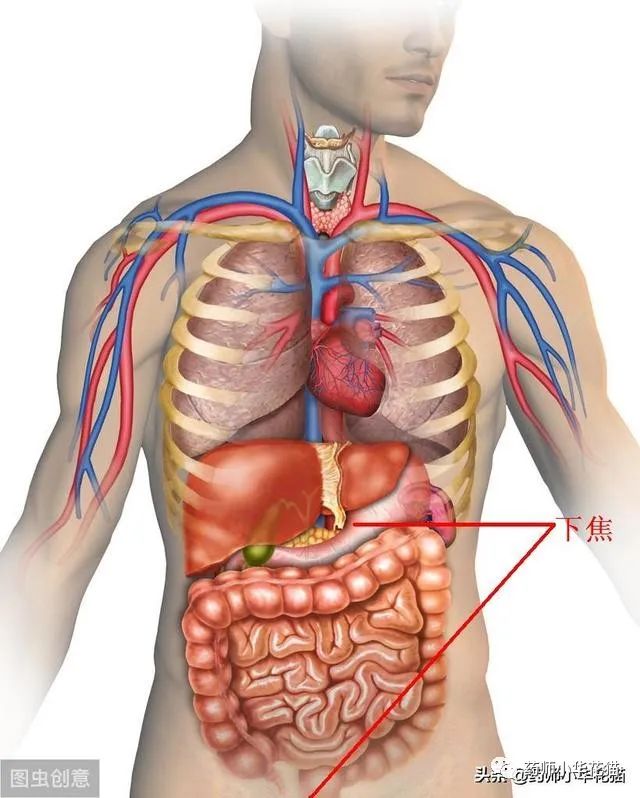
The lower jiao refers to the area of the body from below the stomach to the two yin parts.
Causes of Damp-Heat Accumulation:
Dampness carrying heat or heat carrying dampness can lead to a series of uncomfortable symptoms in the body. Previously, I wrote an article discussing symptoms such as a sticky mouth, lack of taste while eating, and bloating in the abdomen, providing examples of ten commonly used herbs for treating damp obstruction in the middle jiao. Damp-heat has a characteristic of easily invading the lower jiao (the lower abdominal cavity from below the stomach to the two yin parts), leading to damp-heat accumulation. The primary function of the lower jiao is excretion, and it is also associated with the reproductive system; therefore, damp-heat accumulation can bring about a series of discomforts in related areas.
Main Classifications, Symptoms, and Common TCM Formulas for Damp-Heat Accumulation:
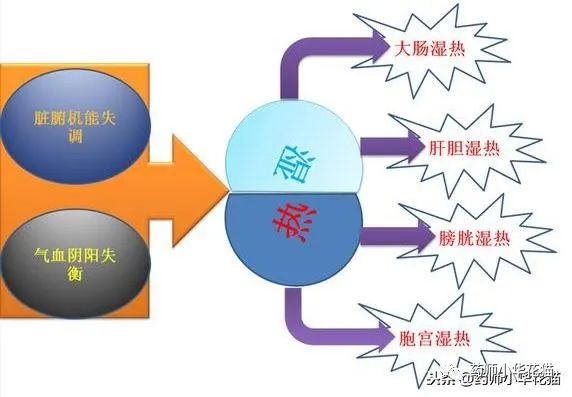
Damp-heat accumulation can be classified into four types: damp-heat in the large intestine, liver-gallbladder damp-heat, bladder damp-heat, and uterine damp-heat.
-
1. Large Intestine Damp-Heat
【Major Symptoms】: Abdominal pain, diarrhea, yellow and foul-smelling stools, burning and distension in the anus, urgent need to defecate, difficulty in passing stools while sitting on the toilet, stools often sticking to the toilet bowl and difficult to flush, and some may present with dysentery characterized by a mixture of red and white pus and blood; thirst, short yellow urine, chills and fever, or just a fear of heat without fear of cold.
【Causes】: Accumulation of damp and heat in the body, unable to be expelled, leading to stagnation of Qi in the lower jiao, resulting in dysfunction of transmission, causing damp-heat obstruction in the large intestine, leading to unimpeded bowel movements and heat accumulation.
Examples of TCM Formulas
① Xiang Lian Wan (Xianglian Pill)
【Main Ingredients】: The main ingredients are Rhizoma Coptidis (Huanglian) and Saussurea (Muxiang).
【Functions and Indications】: Clears heat and dries dampness, promotes Qi and alleviates pain. Used for diarrhea and abdominal pain with yellow and sticky stools.
【Dosage】: Oral administration. 3-6 grams per dose, 2-3 times a day.
② Xiang Lian Hua Zhi Wan (Xianglian Transforming Pill)
【Main Ingredients】: Huanglian, Muxiang, Huangqin, Zhi Shi (stir-fried), Chen Pi, Qing Pi (vinegar-fried), Hou Po (ginger-fried), Bing Lang (fried), Hua Shi, Bai Shao (fried), Dang Gui, Gan Cao.
【Functions and Indications】: Clears heat and promotes dampness, invigorates blood and transforms stagnation. Used for dysentery caused by large intestine damp-heat, with symptoms of pus and blood in stools, urgency, and abdominal pain.
【Dosage】: Oral administration. 2 pills per dose, 2 times a day.
③ Jia Wei Xiang Lian Wan (Modified Xianglian Pill)
【Main Ingredients】: Muxiang, Jiang Huanglian, Huangqin, Huangbai (vinegar-fried), Bai Shao, Dang Gui, Jiang Hou Po, Zhi Ke (stir-fried), Bing Lang, vinegar-prepared Yanhusuo, Zhi Wuzhuyu, fried Gan Cao.
【Functions and Indications】: Clears heat and dispels dampness, transforms stagnation and alleviates pain. Used for dysentery caused by large intestine damp-heat, with symptoms of diarrhea, abdominal pain, and urgency.
【Dosage】: Oral administration, 6 grams (1 bag) per dose, 3 times a day.
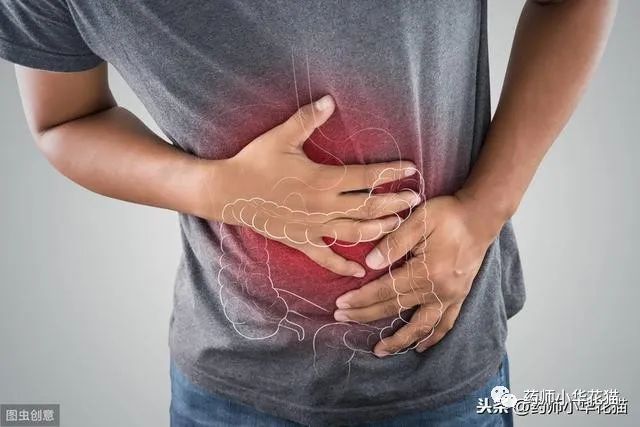
Diagram of Large Intestine Damp-Heat
-
2. Bladder Damp-Heat
【Major Symptoms】: Abnormal urination, frequent urination, urgency, painful urination, and incomplete urination. The heat type of dysuria mentioned in a previous article on six typical dysuria treatments is caused by damp-heat accumulation in the bladder.
【Causes】: Excessive alcohol consumption is one of the significant causes of bladder damp-heat, or a preference for spicy and greasy foods, which can lead to the internal generation of damp-heat that cannot be expelled in a timely manner. Over time, damp-heat descends, obstructing the bladder’s normal function, leading to impaired Qi transformation, dysfunction of opening and closing, and damage to the meridians by damp-heat, thus affecting urination and developing into bladder damp-heat syndrome.
Examples of TCM Formulas
① Niaoganning Granules
【Main Ingredients】: Seaweed, Lianqian grass, Pteris, Hedyotis, and Viola.
【Functions and Indications】: Clears heat and detoxifies, promotes urination. Used for dysuria caused by bladder damp-heat: symptoms include frequent urination, urgency, painful urination, and yellowish urine, with incomplete urination; acute urinary tract infections or chronic urinary tract infections with acute exacerbation due to damp-heat accumulation.
【Dosage】: Dissolve in hot water, 5 grams per dose, 3-4 times a day.
② Jinsha Wuling Wan (Gold Sand Five Lin Pill)
【Main Ingredients】: Seaweed, Polyporus, Anemone, Rhubarb, Red Peony, Equisetum, Poria, Mutong, Huangbai, Rehmannia, Plantago, Huangqin, Danggui.
【Functions and Indications】: Clears heat and promotes urination. Used for bladder damp-heat, with symptoms of turbid urine and painful urination.
【Dosage】: Take with lamp wick tea or warm water, 6 grams (1 bag) per dose, 2-3 times a day.
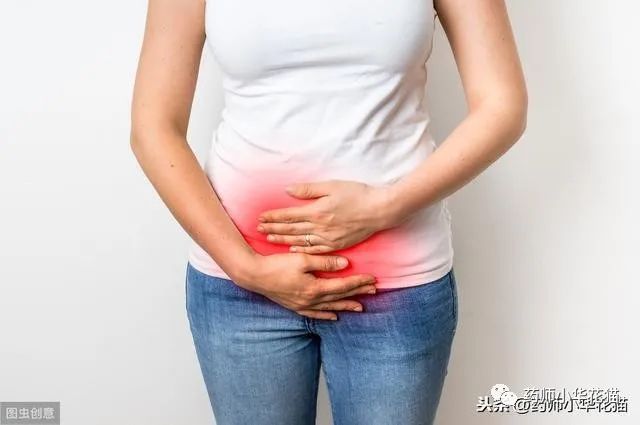
Diagram of Bladder Damp-Heat
-
3. Liver-Gallbladder Damp-Heat
【Major Symptoms】: Bitter taste in the mouth, tinnitus, distension or pain in the hypochondrium, yellowing of the skin and sclera, men may experience dampness in the scrotum and swelling of the genitals, while women may present with leukorrhea.
【Causes】: Often due to excessive alcohol consumption and indulgence in rich, spicy foods leading to the internal generation of dampness, which transforms into heat over time, or dysfunction of the spleen and stomach leading to the internal generation of dampness, which accumulates and transforms into heat, obstructing the liver and gallbladder.
Examples of TCM Formulas
① Long Dan Cao Pian (Gentian Liver-Draining Pills)
【Main Ingredients】: Gentian, Bupleurum, Huangqin, Fructus Gardeniae (stir-fried), Alisma, Mutong, Plantago (salt-fried), Danggui (wine-fried), Rehmannia, fried Gan Cao.
【Functions and Indications】: Clears liver and gallbladder, promotes damp-heat. Used for liver-gallbladder damp-heat, with symptoms of dizziness, red eyes, tinnitus, hypochondriac pain, bitter taste, yellow urine, and damp-heat leukorrhea.
【Dosage】: Oral administration. 3-6 grams per dose, 2 times a day.
② Yin Zhi Huang Oral Liquid
【Main Ingredients】: Extracts of Artemisia, Gardenia, Huangqin, and Honeysuckle.
【Functions and Indications】: Clears heat and detoxifies, promotes dampness and reduces jaundice. Used for jaundice caused by liver-gallbladder damp-heat, with symptoms of yellowing of the face and body, chest and hypochondriac distension, nausea, vomiting, and yellow urine; for acute and chronic hepatitis with the above symptoms.
【Dosage】: Oral administration. 10 ml per dose, 3 times a day.
③ Huang Bai Jiao Nang (Phellodendron Capsules)
【Main Ingredients】: Huangbai.
【Functions and Indications】: Clears heat and dries dampness, drains fire and resolves toxicity. Used for damp-heat diarrhea, jaundice, leukorrhea, heat dysuria, beriberi, steaming bone fever, night sweats, nocturnal emissions, carbuncles, and eczema.
【Dosage】: Oral administration, 3-4 capsules per dose, 3-4 times a day.
④ Er Miao Wan (Two Marvels Pill)
【Main Ingredients】: Atractylodes (stir-fried) and Huangbai (stir-fried).
【Functions and Indications】: Dries dampness and clears heat. Used for damp-heat accumulation, leukorrhea, and scrotal dampness and itching.
【Dosage】: Oral administration, 6-9 grams per dose, 2 times a day.
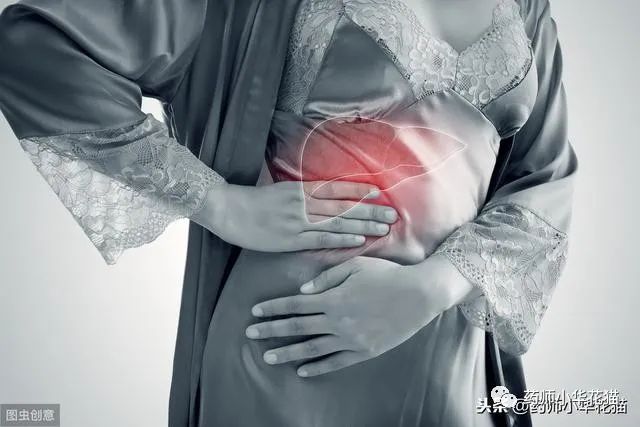
Diagram of Liver-Gallbladder Damp-Heat
-
4. Uterine Damp-Heat
【Major Symptoms】: Excessive leukorrhea, yellowish and thick discharge with foul odor, itching and erosion in the genital area. Uterine damp-heat can cause various common symptoms of gynecological diseases.
【Causes】: Damp-heat pathogens invade the pelvic cavity, leading to Qi and blood stagnation. Damp-heat invasion results in accumulation in the uterus.
Examples of TCM Formulas
① Fu Yan Kang
【Main Ingredients】: Red Peony, Smilax, Vinegar-processed Sparganium, Stir-fried Melia, Vinegar-processed Curcuma, Vinegar-prepared Yanhusuo, Stir-fried Euryale, Danggui, Sophora, Vinegar-processed Cyperus, Huangbai, Danshen, Yam.
【Functions and Indications】: Clears heat and promotes dampness, regulates Qi and invigorates blood, disperses masses and reduces swelling. Used for damp-heat accumulation and toxic stagnation causing leukorrhea, with symptoms of excessive yellow discharge, foul odor, lower abdominal pain, lumbar pain, bitter taste, and dry throat; for vaginitis, chronic pelvic inflammatory disease with the above symptoms.
【Dosage】: Oral administration, 6 tablets per dose, 3 times a day.
② Fuke Qianjin Pian
【Main Ingredients】: Qianjinba, Gold Cherry Root, Andrographis, Gunpowder Tree, Single Needle, Danggui, Chicken Blood Vine.
【Functions and Indications】: Clears heat and eliminates dampness, benefits Qi and transforms stasis. Used for leukorrhea, abdominal pain caused by damp-heat stagnation, with symptoms of excessive yellow discharge, thick consistency, foul odor, lower abdominal pain, lumbar soreness, fatigue; for chronic pelvic inflammatory disease, endometritis, chronic cervicitis with the above symptoms.
【Dosage】: Oral administration. 6 tablets per dose, 3 times a day.
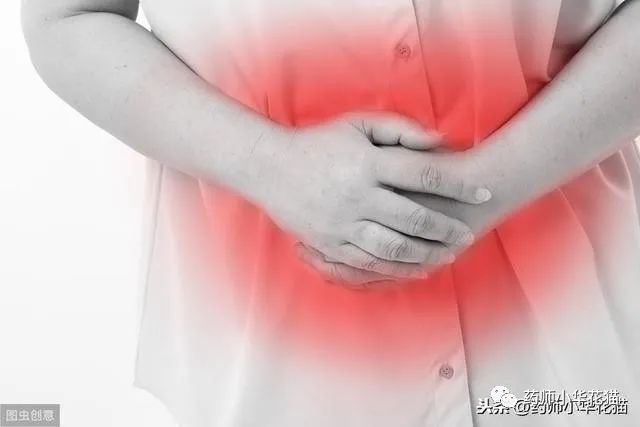
Diagram of Uterine Damp-Heat
Having discussed the classifications of damp-heat accumulation, some may wonder if there are measures we can take in daily life to avoid being entangled by damp-heat. The answer is certainly yes. We need to pay attention to the following four points in our daily lives:
1. Improve the living environment, and try to avoid staying or living in high-temperature and high-humidity environments for extended periods. This can prevent external damp-heat from invading the body.
2. Pay attention to diet, and try to eat less greasy and spicy foods, and avoid excessive alcohol consumption. Additionally, during the summer, it is best to limit sugary fruit juices, as sweetness can generate phlegm-heat, and excessive consumption can lead to internal damp-heat accumulation. These dietary considerations can help reduce the exacerbation of internal heat.
3. Develop good living and hygiene habits, especially for both men and women—do not hold urine. When feeling the urge to urinate, it is essential to do so promptly, as prolonged retention can lead to various damp-heat-related diseases, such as urethritis or reproductive system inflammation. Maintain good hygiene habits, bathe regularly, and ensure to dry thoroughly before engaging in other activities; do not wear damp clothes or sleep while still wet. Never wear clothes that are not completely dry, and be cautious about this.
4. Strengthen physical exercise, maintain moderate daily activity to promote metabolism. Most importantly, keep a cheerful mood to prevent emotional fluctuations.
I hope everyone can maintain a healthy and strong physique.

